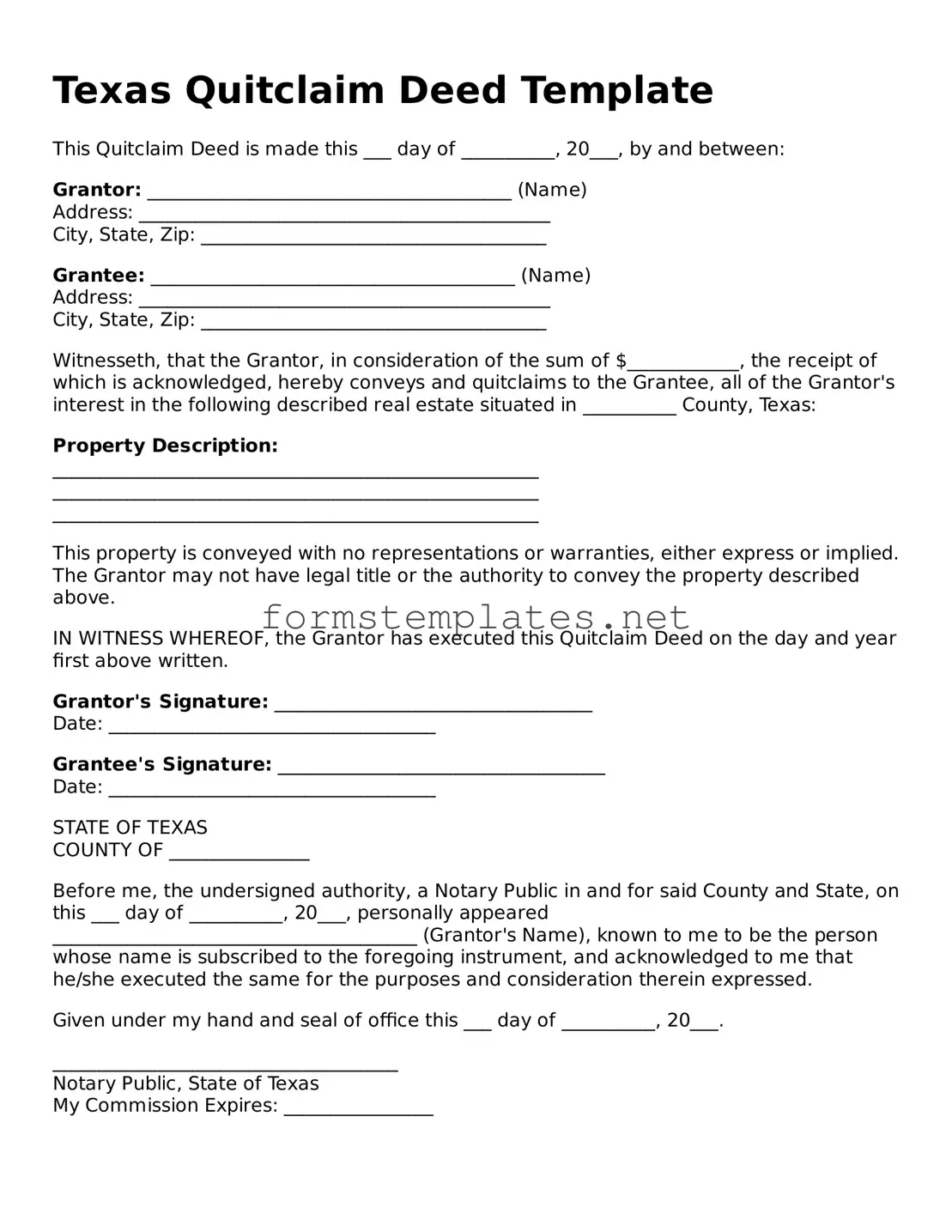Texas Quitclaim Deed Template
This Quitclaim Deed is made this ___ day of __________, 20___, by and between:
Grantor: _______________________________________ (Name)
Address: ____________________________________________
City, State, Zip: _____________________________________
Grantee: _______________________________________ (Name)
Address: ____________________________________________
City, State, Zip: _____________________________________
Witnesseth, that the Grantor, in consideration of the sum of $____________, the receipt of which is acknowledged, hereby conveys and quitclaims to the Grantee, all of the Grantor's interest in the following described real estate situated in __________ County, Texas:
Property Description:
____________________________________________________
____________________________________________________
____________________________________________________
This property is conveyed with no representations or warranties, either express or implied. The Grantor may not have legal title or the authority to convey the property described above.
IN WITNESS WHEREOF, the Grantor has executed this Quitclaim Deed on the day and year first above written.
Grantor's Signature: __________________________________
Date: ___________________________________
Grantee's Signature: ___________________________________
Date: ___________________________________
STATE OF TEXAS
COUNTY OF _______________
Before me, the undersigned authority, a Notary Public in and for said County and State, on this ___ day of __________, 20___, personally appeared _______________________________________ (Grantor's Name), known to me to be the person whose name is subscribed to the foregoing instrument, and acknowledged to me that he/she executed the same for the purposes and consideration therein expressed.
Given under my hand and seal of office this ___ day of __________, 20___.
_____________________________________
Notary Public, State of Texas
My Commission Expires: ________________
